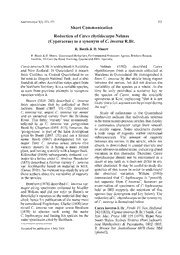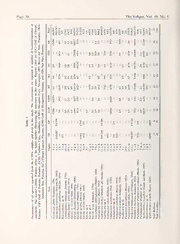
Digital Design and Verilog HDL Fundamentals PDF
Preview Digital Design and Verilog HDL Fundamentals
Digital Design and Verilog HDL Fundamentals 74156_FM.indd 1 5/12/08 11:18:53 AM Digital Design and Verilog HDL Fundamentals Joseph Cavanagh Santa Clara University California, USA Boca Raton London New York CRC Press is an imprint of the Taylor & Francis Group, an informa business 74156_FM.indd 3 5/12/08 11:18:54 AM CRC Press Taylor & Francis Group 6000 Broken Sound Parkway NW, Suite 300 Boca Raton, FL 33487-2742 © 2008 by Taylor and Francis Group, LLC CRC Press is an imprint of Taylor & Francis Group, an Informa business No claim to original U.S. Government works Printed in the United States of America on acid-free paper 10 9 8 7 6 5 4 3 2 1 International Standard Book Number: 978-1-4200-7415-4 (Hardback) This book contains information obtained from authentic and highly regarded sources. Reasonable efforts have been made to publish reliable data and information, but the author and publisher cannot assume responsibility for the valid- ity of all materials or the consequences of their use. The authors and publishers have attempted to trace the copyright holders of all material reproduced in this publication and apologize to copyright holders if permission to publish in this form has not been obtained. If any copyright material has not been acknowledged please write and let us know so we may rectify in any future reprint. Except as permitted under U.S. Copyright Law, no part of this book may be reprinted, reproduced, transmitted, or uti- lized in any form by any electronic, mechanical, or other means, now known or hereafter invented, including photocopy- ing, microfilming, and recording, or in any information storage or retrieval system, without written permission from the publishers. For permission to photocopy or use material electronically from this work, please access www.copyright.com (http:// www.copyright.com/) or contact the Copyright Clearance Center, Inc. (CCC), 222 Rosewood Drive, Danvers, MA 01923, 978-750-8400. CCC is a not-for-profit organization that provides licenses and registration for a variety of users. For organizations that have been granted a photocopy license by the CCC, a separate system of payment has been arranged. Trademark Notice: Product or corporate names may be trademarks or registered trademarks, and are used only for identification and explanation without intent to infringe. Library of Congress Cataloging‑in‑Publication Data Cavanagh, Joseph J. F. Digital design and Verilog HDL fundamentals / Joseph Cavanagh. p. cm. Includes bibliographical references and index. ISBN 978-1-4200-7415-4 (hardback : alk. paper) 1. Logic circuits--Computer-aided design. 2. Verilog (Computer hardware description language) 3. Digital electronics. I. Title. TK7868.D5C3945 2008 621.39’5--dc22 2008012851 Visit the Taylor & Francis Web site at http://www.taylorandfrancis.com and the CRC Press Web site at http://www.crcpress.com By the same author: DIGITAL COMPUTER ARITHMETIC: Design and Implementation SEQUENTIAL LOGIC: Analysis and Synthesis VERILOG HDL: Digital Design and Modeling ________________________ The Computer Conspiracy — A novel To my son, Brad, for his continued help and support. PREFACE The field of digital logic consists primarily of the analysis and synthesis of combina- tional logic circuits and sequential logic circuits, also referred to as finite-state machines. The principal characteristic of combinational logic is that the outputs are a function of the present inputs only, whereas the outputs of sequential logic are a function of the input sequence; that is, the input history. Sequential logic, therefore, requires storage elements which indicate the present state of the machine relative to a unique sequence of inputs. Sequential logic is partitioned into synchronous and asynchronous sequential machines. Synchronous sequential machines are controlled by a system clock which provides the triggering mechanism to cause state changes. Asynchronous sequential machines have no clocking mechanism — the machines change state upon the appli- cation of input signals. The input signals provide the means to enable the sequential machines to proceed through a prescribed sequence of states. The purpose of this book is to provide a thorough exposition of the analysis and synthesis of combinational and sequential logic circuits, where sequential logic con- sists of synchronous and asynchronous sequential machines. Emphasis is placed on structured and rigorous design principles that can be applied to practical applica- tions. Each step of the analysis and synthesis procedures is clearly delineated. Each method that is presented is expounded in sufficient detail with several accompanying examples. The Verilog hardware description language (HDL) is used extensively through- out the book for both combinational and sequential logic design. Verilog HDL is an Institute of Electrical and Electronics Engineers (IEEE) standard: 1364-1995. The book concentrates on combinational and sequential logic design with emphasis on the detailed design of various Verilog HDL projects. The examples are designed first using traditional design techniques, then implemented using Verilog HDL. This allows the reader to correlate and compare the two design methodologies. The book is intended to be tutorial, and as such, is comprehensive and self con- tained. All designs are carried through to completion — nothing is left unfinished or partially designed. Each chapter includes numerous problems of varying complexity to be designed by the reader, including both traditional logic design techniques and Verilog HDL design techniques in appropriate chapters. The Verilog HDL designs include the design module, the test bench module which tests the design for correct functionality, the outputs obtained from the test bench, and the waveforms obtained from the test bench. Chapter 1 covers the number systems of different radices such as binary, octal, decimal, and hexadecimal, including conversion between radices. The chapter also
Description:The list of books you might like

The 48 Laws of Power

$100m Offers

The Spanish Love Deception

Mind Management, Not Time Management
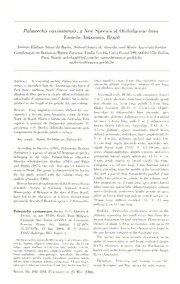
Palmorchis caxiuanensis, a new species of Orchidaceae from eastern Amazonia, Brazil

Course Notebook for Trainers

By: Kristine aka KITIN

By Mohamed Farouk Ahmed Mohamed

Games, Ideas and Activities for Primary Drama (Classroom Gems)
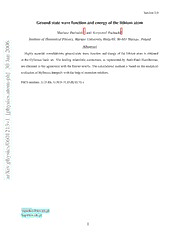
Ground state wave function and energy of the lithium atom

UFO Newsclipping Service 2006 04 no 441

Análise Multivariada de Dados

Taxis Equations for Amoeboid Cells
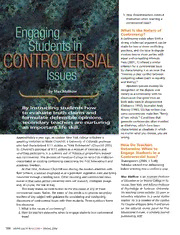
ERIC EJ738065: Engaging Students in Controversial Issues

Greek Government Gazette: Part 4, 2006 no. 21

Palo Alto Networks

Journal of Chromatography A 1993: Vol 655 Index

Facharztwissen Viszeralchirurgie

